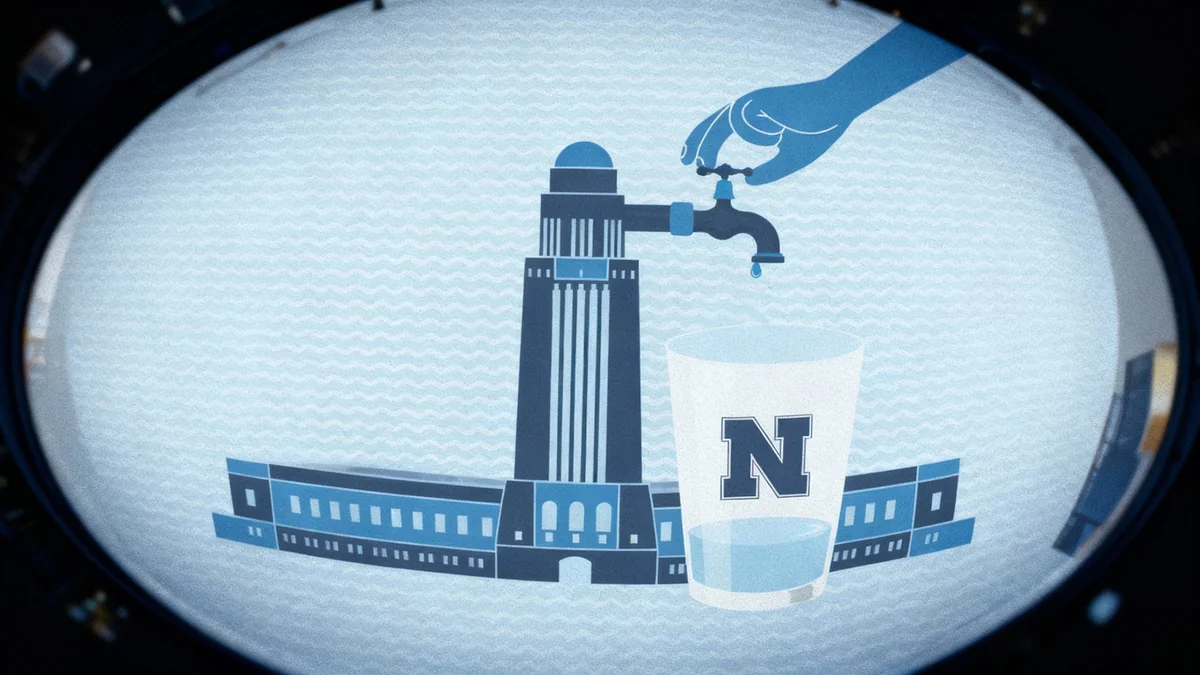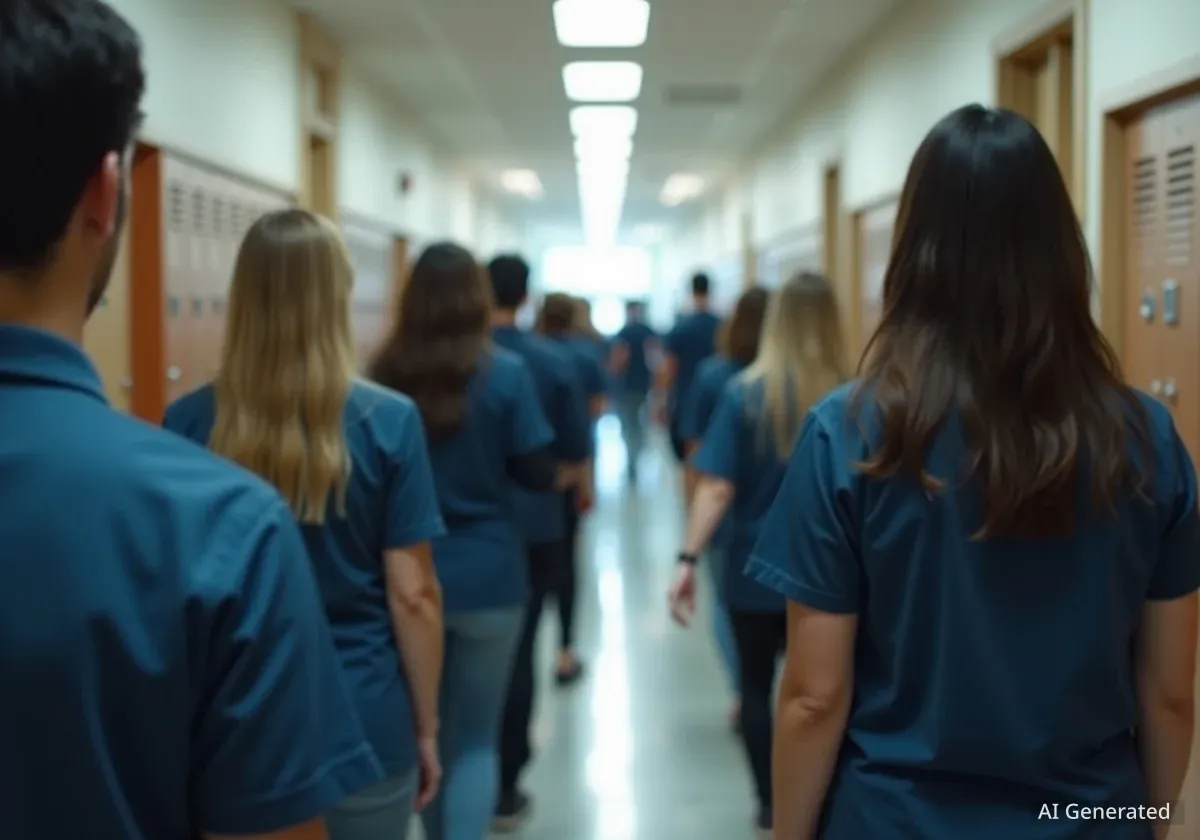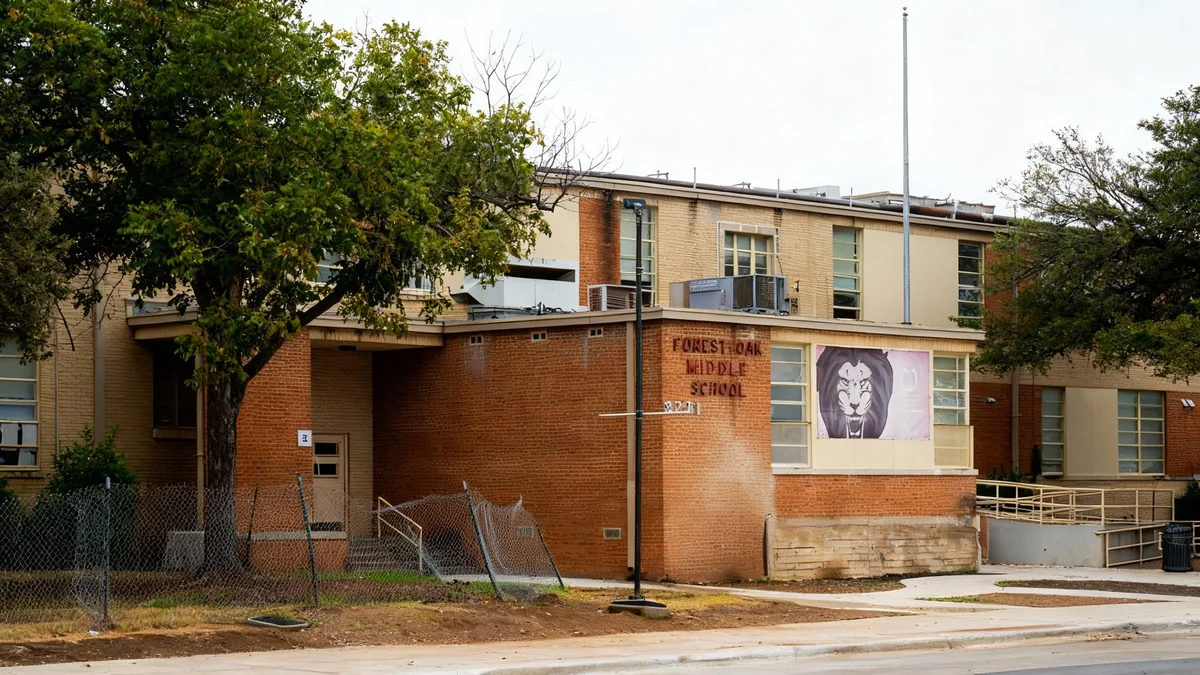The University of Nebraska system is grappling with significant budget cuts, a direct consequence of state funding failing to keep pace with inflation over the last quarter-century. Once constituting over a third of the university's operating budget, state appropriations now account for less than a fifth, forcing administrators to approve a $20 million system-wide reduction and an average 5% tuition increase.
This financial pressure is most acute at the University of Nebraska-Lincoln (UNL), which must address an additional $27.5 million deficit. The situation highlights a long-term shift in state priorities and raises critical questions about the future of public higher education in Nebraska.
Key Takeaways
- State funding for the University of Nebraska has dropped from 34% of its budget in 2000 to just 19% today.
- The university system is implementing $20 million in cuts, with the Lincoln campus facing an additional $27.5 million deficit.
- An average 5% tuition increase has been approved across all five campuses to help cover rising costs.
- If state appropriations had kept up with inflation over the past two decades, the university would have an additional $216 million this year.
- The university's share of the state's overall budget has fallen from 25% in 1990 to 13.25% today.
A Quarter-Century of Diminishing Support
The financial challenges facing the University of Nebraska are not a recent development but the culmination of a 25-year trend. In 2000, state funding provided $388 million, which was 34% of the university's total budget. Today, that figure has grown to $699 million, but its purchasing power has eroded significantly.
This $699 million now represents only 19% of the university’s $3.6 billion total budget. According to Anne Barnes, the university's senior vice president and chief financial officer, state funding has not kept up with inflation for two decades. Had it matched the rate of inflation, the university would have received an additional $216 million in state aid this year alone.
Former UNL Chancellor Harvey Perlman noted that this state-aided budget, which combines taxpayer dollars and tuition, is the flexible funding source intended to support the core academic mission. "Instructional costs have gone up, and the Legislature has not kept up with those increases," Perlman explained.
Funding by the Numbers
- 2000: State aid was 34% of the university's total budget.
- Today: State aid is 19% of the total budget.
- Inflation Gap: The university is short an estimated $216 million this year due to funding not matching inflation.
- State Budget Share: The university's portion of the state budget fell from 25% in 1990 to 13.25% today.
Shifting State Priorities and Legislative Views
The decline in the university's share of state resources reflects a broader shift in Nebraska's fiscal priorities. Over the past three decades, state spending on K-12 education, Medicaid, and the prison system has grown substantially. The Department of Health and Human Services now accounts for 42% of the state budget, making the university's 13.25% share the second largest but significantly smaller than in previous years.
Lawmakers point to these competing demands as a primary reason for the constrained university funding. Sen. Rob Clements, chair of the state Appropriations Committee, framed the issue as one of balancing essential services. "Do you want us to not fix roads? Or, (if) people are sick and needing food, should we not treat them?" he asked. "There’s priorities that have to be met in the budgeting process, and we have tried to treat everybody fairly."
More recently, legislative priorities have included tax cuts and funding for large-scale projects like the Perkins County Canal, further limiting available revenue for higher education. Clements also suggested that taxpayers should not be expected to cover shortfalls caused by declining enrollment and rising overhead costs at the university.
"If sales aren’t keeping up, a business probably cuts back somewhere in their expenses. I think I would ask the university to increase their enrollment in order to get some more funding."
- Sen. Rob Clements, Chair of the Appropriations Committee
This perspective contrasts sharply with that of university advocates. John Shrader, president of the faculty senate at UNL, feels the university has been unfairly cast as fiscally irresponsible. "The discourse at the Legislature has been, ‘Sorry, you have enough money already,’" Shrader said. "We’re the bad guys, because we have a $27 million deficit, but frankly, the investment in this campus has not been as high as it needs to be for us to be what they want us to be."
The Impact on Tuition and Students
As state support has faltered, the burden has increasingly shifted to students and their families through tuition hikes. Earlier this year, the Board of Regents approved an average 5% tuition increase across the system. This decision came after a tuition freeze during the pandemic ended in 2024.
Despite the recent increase, university officials emphasize their efforts to maintain affordability. Undergraduate resident tuition at UNL has risen from $92 per credit hour in 2000 to $277 today. While significant, this is still lower than many peer institutions. The University of Iowa charges residents $399 per credit hour, and the University of Kansas charges $376.
A Balancing Act
University leaders describe their position as a difficult balancing act. "We are the lowest in the Big Ten in tuition, and yet every time we go to raise those rates, we’re reminded of how hard that is on families," said Jack Stark, an Omaha-area regent. Keeping tuition low has been a priority, but Perlman warns that this strategy is unsustainable without adequate state investment, ultimately affecting the quality of education.
Sen. Danielle Conrad, a Lincoln Democrat, warned of the long-term consequences of this trend. "Every time the state doesn’t do its part to fund the university, moms and dads are going to get saddled with higher tuition checks, and students are going to get saddled with higher debt," she stated.
Searching for Alternative Revenue Streams
In response to stagnant state aid, the University of Nebraska has diversified its revenue sources. However, these alternatives often come with restrictions that limit how the money can be used. Philanthropic donations, or trust funds, have grown fivefold in 25 years and now make up 18% of the system's budget. But this money is typically earmarked for specific purposes by donors.
Federal funding, primarily for research, has also become a major component, increasing from $167 million in 2000 to $740 million this year. This accounts for about a fifth of the total budget. However, this revenue stream is facing new uncertainty. University of Nebraska System President Jeffrey Gold reported that the university has already lost $88 million in federal research dollars due to recent national policy changes and could potentially lose up to $285 million.
Revolving funds, which include revenue from student housing, dining, and other fees, have also nearly doubled since 2010 and now comprise over a quarter of the budget. Like philanthropic gifts, this money is restricted and cannot be used to cover general instructional costs.
President Gold noted that the university has already cut approximately $130 million in recurring costs over the past decade and anticipates another $40 million in cuts will be necessary in the next two years. For former Chancellor Perlman, the path forward requires a change in perspective from state leaders.
"The thing for the Legislature is to understand the importance of the university, and how the future of Nebraska is tied to its success. I think that’s clear that they don’t fully appreciate the importance of these investments."
- Harvey Perlman, Former UNL Chancellor
As the university navigates this challenging financial landscape, the decisions made by state lawmakers will continue to shape the affordability, accessibility, and quality of public higher education for generations of Nebraskans.





